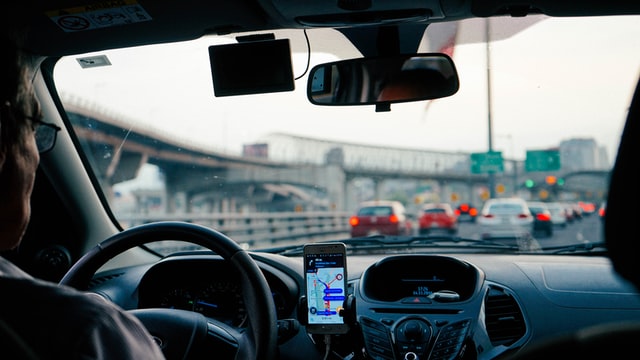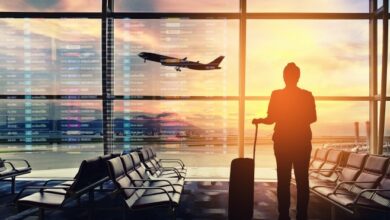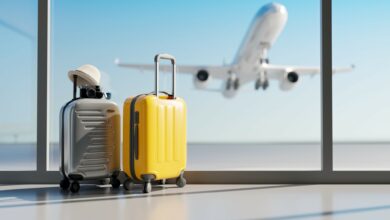A
A
A
Between 2002 and 2009, actor Tony Shalhoub starred in the television series
Monk (2002-2009). His memorable character, Adrian Monk, displayed a strong aversion to microbes. Audiences laughed while watching the detective clean his hands with a sanitary wipe after every handshake, and compulsively sanitize door handles and other surfaces touched by other people.
Yet today, as the COVID-19 Pandemic continues to threaten public health around the world, Mr. Monk might become a role model (of sorts) for everyone using mass transit systems. The CDC recently issued comprehensive new guidelines to assist commuters. Currently, most jurisdictions plan to ease stay-at-home restrictions. However, the federal health agency still recommends adhering to social distancing.
Read More »
Why Follow Transit Recommendations?
Commuters maintain a strong personal interest in complying with the new guidelines. An approved vaccine for COVID-19 does not yet exist. People traveling to (and from) work settings might easily contract the contagious virus and carry it home to their family members. Unfortunately, mass transit settings remain risky sites today from a wellness standpoint. Large numbers of people potentially come into close contact with one another in these busy, crowded locations.
Potentially, strangers remain in contact with one another for extended periods of time in train stations, terminals, buses, subways and other mass transportation facilities. A few infectious individuals might sicken many others if commuters fail to adhere to best practices. Why should you consider complying with the Centers For Disease Control and Prevention guidelines? These recommendations may help you avoid exposing yourself and your loved ones to a harmful illness.
An Overview
In a nutshell, the CDC wants the public to eliminate unnecessary mass transit trips temporarily (until the Pandemic ends). The agency suggests the public rely upon single cars for daily commuting purposes, to the extent possible. It urges employers to consider either paying for employee parking or staggering business hours (to avoid generating crowds at public transit facilities).
The new guidelines contend with a harsh reality in certain places. For example, some densely populated urban centers simply cannot accommodate the demand for downtown parking spaces. In several cities, monthly parking rates greatly exceed minimum wage employee earning capabilities. Numerous metropolitan planning departments for decades have sought to discourage commuters from driving alone to work.
Travel by Car
Ideally, people complying with the guidelines will travel to and from employment in individual autos. The federal agency recommends traveling alone or with household members in this way. For example, one spouse might drop another off at a job site. Medical experts recommend commuters exercise some important daily precautions:
- Wash your hands before departing using either an alcohol-based hand sanitizer or soap and water.
- Repeat the hand washing immediately after arriving at work.
- Sanitize areas of the vehicle that hands touch frequently, such as the steering wheel, shift handles, radio knobs, seatbelt buckles, and car door handles.
Just like the fictional Adrian Monk, consider taking along packets of sanitary wipes and a portable hand sanitizer. Clean off surfaces that might harbor the virus.
If you cannot travel in your own car, the agency’s guidelines also apply to taxis, limos, and ride share vehicles. The recommendations for performing hand washing and sanitizing surfaces apply. Additionally, infectious disease experts recommend (if possible) endeavoring to maintain distance between the driver and passengers. Wear cloth face masks to reduce the risk of accidentally passing the virus to others. This contagious illness becomes infectious two days before symptoms of illness appear.
A Commute by Mass Transit
People who rely on mass transit systems should continue to practice social distancing, too. The federal agency urges passengers on buses to enter and leave the bus using rear doors whenever permitted. Passengers should skip seats to maintain as much distance as possible between themselves and other travelers. Just like auto commuters, hand washing before leaving home and after arriving at work remains a smart idea. Additionally, if possible, according to the Centers For Disease Control and Prevention, consider using a hand sanitizer immediately after leaving a mass transit hub.
Some other useful tips from the agency assist passengers:
- In most cases, cloth face masks prove useful in preventing inadvertent disease transmission;
- Avoid drinking from free water bottles at mass transit hubs;
- Avoid touching reading materials handled by other passengers;
- Pay close attention to public transit system signs and advisories.
Short Term Disease Prevention Measures
As more states ease work-from-home restrictions, larger number of people will likely resume daily commutes. Adhering to safety guidelines with Adrian Monk-like consistency will hopefully reduce hazards for the public and your loved ones!






